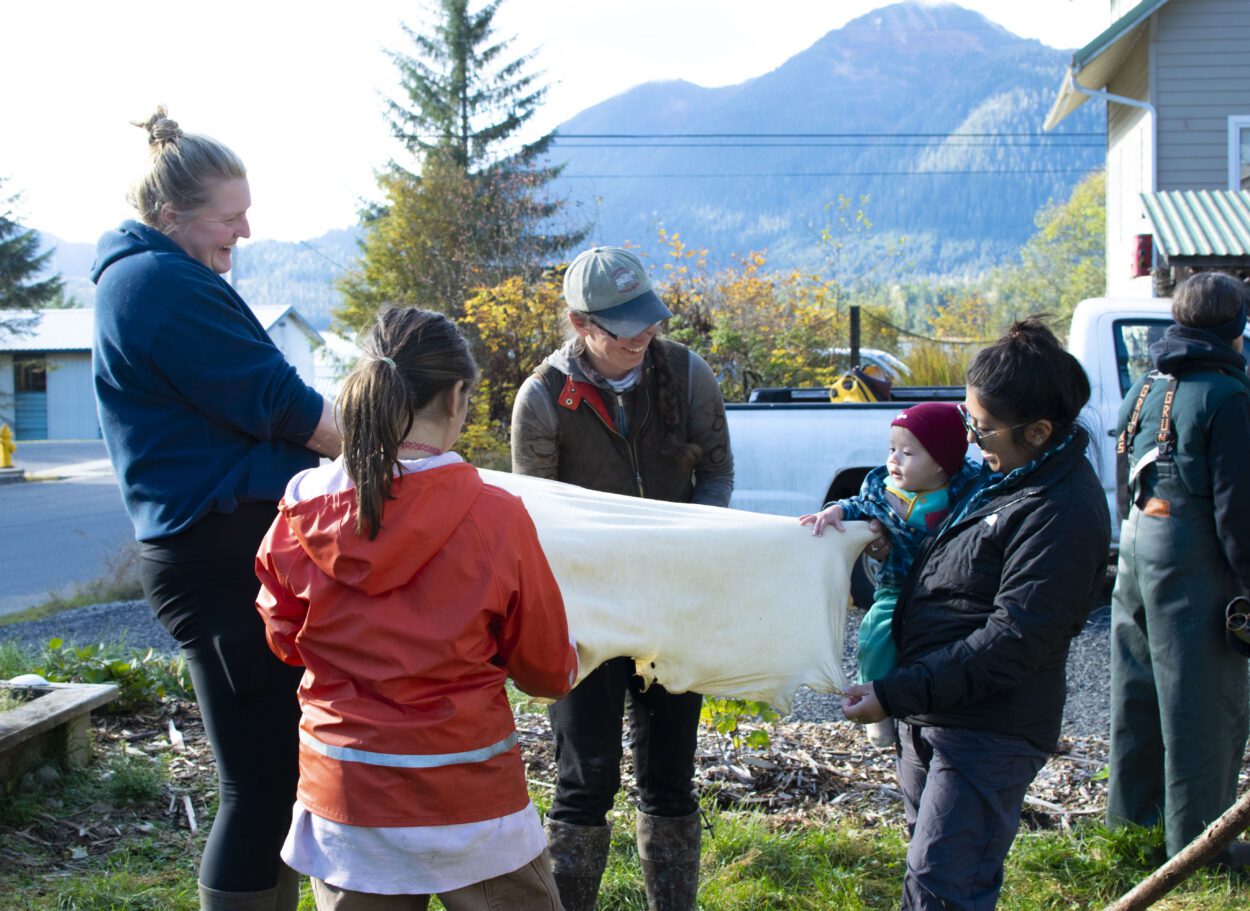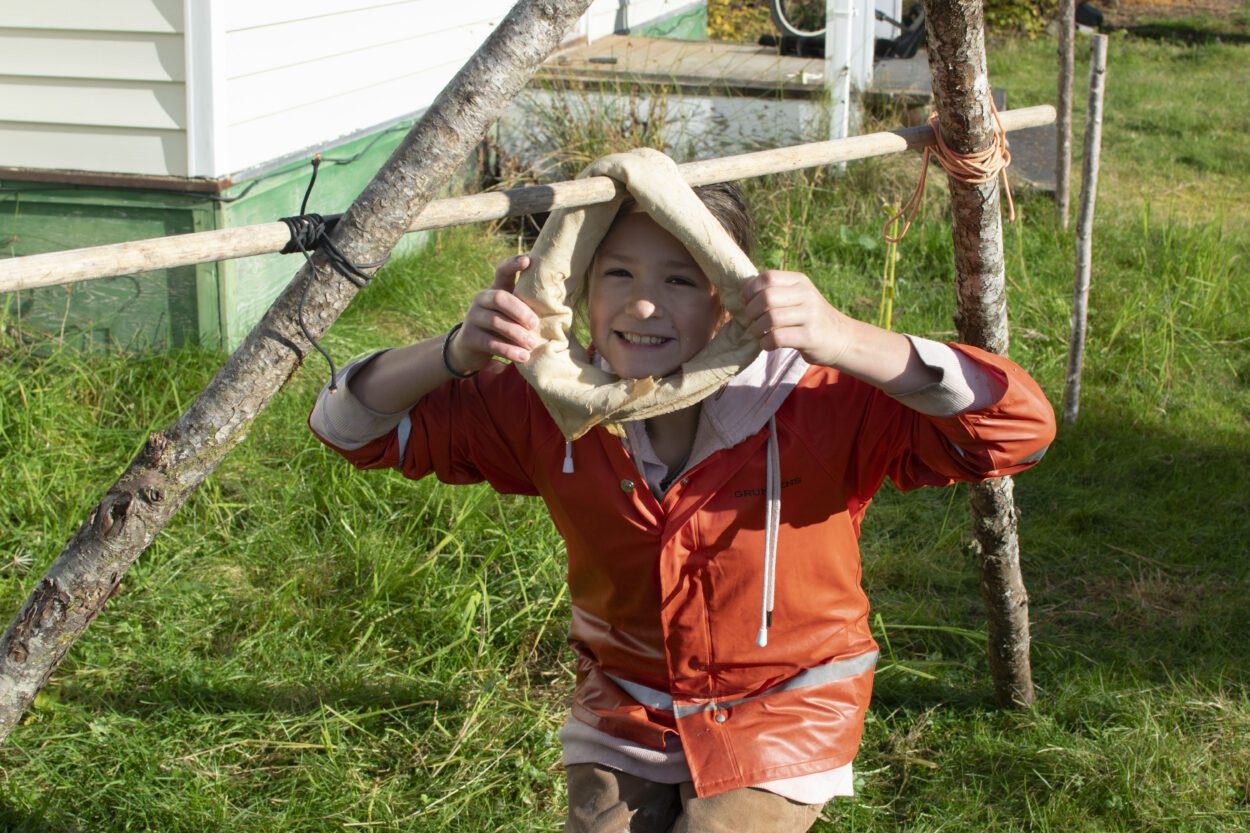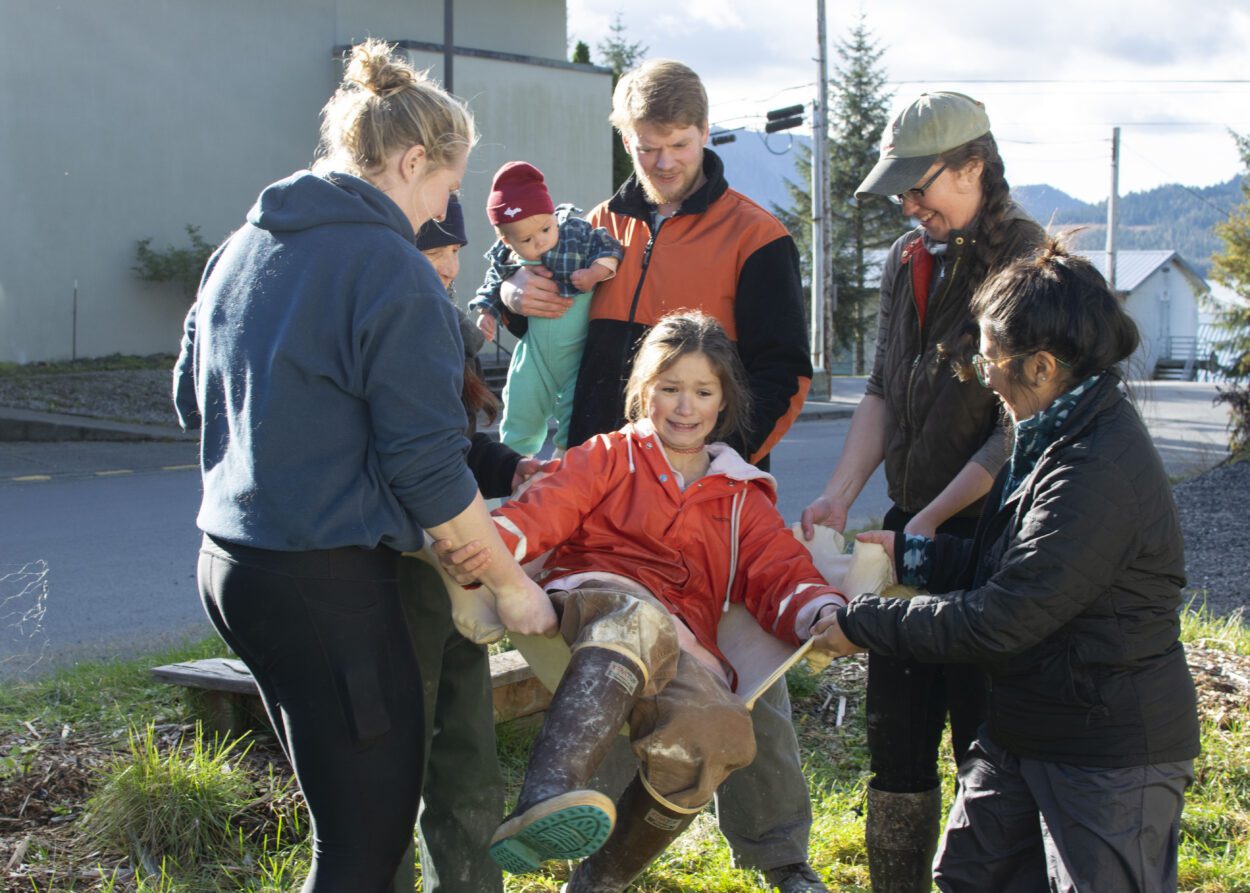
(Photo by Shelby Herbert/KFSK)
Two self-described “amateur tanners” in Southeast are trying to build a community around turning animal hides into leather. KFSK’s Shelby Herbert got her hands dirty at their first workshop in Petersburg, and brings us this story.
It’s a rare bluebird day in Petersburg, but locals aren’t the only ones out tanning in the sun. A group of students are handling deer and moose hides in instructor Laura Holloway’s backyard.
Somebody just said: ‘Don’t forget your sunscreen!’ And I was like… Not that kind of tanning,” said Holloway, laughing.
At one end of the yard, an enormous moose hide was slung over the end of a log.
Another instructor, Greta Healy, was hard at work scraping off scraps of meat, fat, and hair. It’s one of the first steps of the tanning process, and it’s not an easy job. Drops of sweat beaded on her brow as she ran her knife up and down the length of skin.
“We’re taking the ‘grain’ off so that the hide can really get tanned nicely and then get really soft,” said Healy.
While many people spent the early days of the pandemic binging Netflix or growing their sourdough starters, Healy taught herself how to turn raw animal skins into leather. She learned from Tlingit craftspeople in nearby Kake, where she lives. She and Holloway also learned from master tanner Matt Richards, who authored several books on the subject.
The air in Holloway’s yard was thick with the smell of sulfur and stale meat; and, a little more pleasantly of the botanical odor of hemlock bark. Healy was using the bark to dye her moose hide a deep chestnut color.
Once a hide is thoroughly bald and fleshless, the next step is to cure it. Healy said the colorful tannins in the bark will also help soften the hide and make it more water-resistant.
“You try and take out the outer bark and just use this inner red stuff,” said Healy, crumbling the bark in her hands. “This is the tree we took down for firewood last week. Now it has a new life.”
But there are other, more gruesome ways to soften a hide. Holloway is giving a demonstration in front of a bucket of funky liquid. Her tanning journey was a little different than her co-instructor’s. She started by practicing on roadkill squirrels. And that’s just to say — she has a pretty strong stomach.
She showed 11-year-old Anna Ziegler how to soften a hide by dunking it in a mixture of deer brains and egg yolks, before gradually wringing it out.
“If you can get a bubble of it and squeeze it through, you know you’re getting good brain penetration,” said Holloway.
The emulsified fats in the goo coat the fiber network in the skin. To get it all out, Holloway wraps and folds the hide into a donut-like configuration, which she twists tight with a stick. She said wringing out the hide while it dries yields a softer, more flexible material.

There’s an extra step to the drying process — and one that young Anna has been waiting for all day. For a short while, the class is going to turn one of the hides into a trampoline.
“Yeah, it’s making it, like, softer and more bouncy so I can go on it later, and they can toss me up into the sky!” said Anna.
“That’s all you care about?!” Healy asked her.
“That’s all I care about,” Anna answered, laughing. “It’s the only reason I came!”
The instructors motioned for all their students — including this reporter — to all grab hold of an edge of a wet deer hide. At first, the skin looked way too small to hold a kid.
But after a minute or two of pulling and pulling and pulling, there was finally enough room to fit Anna. She climbed into the middle and bounced in the direction of the clear, blue sky.
As the class wrapped up, all that was left to do is let the treated hide dry. Altogether, Healy and Holloway said they’re pleased with the turnout to their first workshop — and their students, including Anna, were excited to put what they’ve learned to use.

“It’s just fun, and I guess I’m kind of good at it,” said Ziegler. “I’m a pro! No no no, just kidding… I’ll get there, if we hunt and stuff. My classmates would be like, ‘Yeah, that’s nasty. Why would you ever do that?’ But I’d say it’s very fun!”
The ideas are abundant for what future hide tanning workshops could look like.
“It would be fun to have, like, a open house,” said Holloway. “Like one weekend, for a few hours, and people could show up and use tools and work on hides.”
While the day held a ton of fun for the participants, Chronic Wasting Disease, or CWD, is anything but. It’s a prion disease that attacks the nervous systems of cervids, like deer and moose. It hasn’t been detected in any Alaskan wildlife, but state and federal agencies — like the Alaska Department of Fish and Game and the Centers for Disease Control — ask people to consider getting their deer and moose tested before handling meat, hides, and offal barehanded.
Luckily, however, fish can’t get CWD. Holloway and Healy hope to someday take the workshop over to Kake, where they could fold in the voices of some more experienced tanners — including a few who can tan fish skins.











